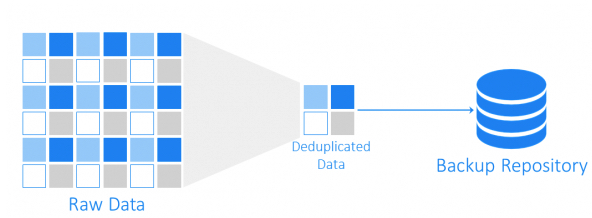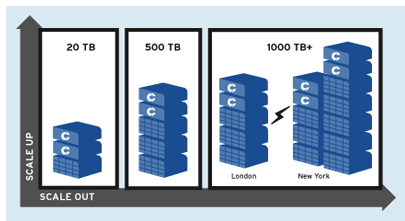Scalable Data Protection Appliances – DCIG
Offering increase as well as differences between them.
This is a Press Release edited by StorageNewsletter.com on May 17, 2019 at 2:13 pm This report was written on May 2, 2019 by Jerome M. Wendt, president and lead analyst of DCIG, Inc., a storage analyst and consulting firm.
This report was written on May 2, 2019 by Jerome M. Wendt, president and lead analyst of DCIG, Inc., a storage analyst and consulting firm.
Breaking Down Scalable Data Protection Appliances
Scalable data protection appliances have arguably emerged as one of the hottest backup trends in quite some time, possibly since the introduction of deduplication into the backup process.
These appliances offer backup software, cloud connectivity, replication, and scalable storage in a single, logical converged or hyperconverged infrastructure platform offering that simplify backup while positioning a company to seamlessly implement the appliance as part of its disaster recovery strategy or even create a DR solution for the first time.
It is as the popularity of these appliances increases, so does the number of product offerings and the differences between them. To help a company break down the differences between these scalable data protection appliances, here are some commonalities between them as well as three key features to evaluate how they differ.
Features in Common
At a high level these products all generally share the following seven features in common:
1 All-inclusive licensing that includes most if not all the software features available on the appliance.
2 Backup software that an organization can use to protect applications in its environment.
3 Connectivity to general-purpose clouds for off-site long-term data retention.
4 Deduplication technologies to reduce the amount of data stored on the appliance.
5 Replication to other appliances on-premises, off-site, and even in the cloud to lay the foundation for disaster recovery.
6 Rapid application recovery which often includes the appliance’s ability to host one or more virtual machines (VMs) on the appliance.
7 Scalable storage that enables a company to quickly and easily add more storage capacity to the appliance.
It is only when a company begins to drill down into each of these features that it starts to observe noticeable differences between each of the features available from each provider.
All-inclusive Licensing
For instance, on the surface, all-inclusive licensing sounds straight forward. If a company buys the appliance, it obtains the software with it. That part of the statement holds true. The key question that a company must ask is, “How much capacity does the all-inclusive licensing cover before I have to start paying more?“
That answer will vary by provider. Some providers such as Cohesity and Rubrik charge by the terabyte. As the amount of data on its appliance under management by its software grows, so do the licensing costs. In contrast, StorageCraft licenses the software on its OneXafe appliance by the node. Once a company licenses StorageCraft’s software for a node, the software license covers all data stored on that node (up to 204TB raw.)
Deduplication
Deduplication software is another technology available on these appliances that a company might assume is implemented essentially the same way across all these available offerings. That assumption would be incorrect.

Each of these appliances implement deduplication in slightly different ways. Cohesity gives a company a few ways to implement deduplication. These include deduplicating data when it backs up data using its backup software or deduplicating data backed up by another backup software to its appliance. A company may, at its discretion, choose in this latter use case to deduplicate either inline or post-process.
StorageCraft deduplicates data using its backup software on the client and also offers inline deduplication for data backed up by another backup software to its appliance. Rubrik only deduplicates data backed up by Cloud Data Management Software. HYCU uses the deduplication technology natively found in the Nutanix AHV hypervisor.
Scalable Storage
A third area of differentiation between these appliances shows up in how they scale storage. While scale-out architectures get a lot of the press, that is only one scalable storage option available to a company. The scale-out architecture, such as employed by Cohesity, HYCU, and Rubrik, entails adding more nodes to an existing configuration.

Using a scale-up architecture, such as is available on the Asigra TrueNAS appliance from iXsystems, a company can add more disk drives to an existing chassis. Still another provider, StorageCraft, uses a combination of both architectures in its OneXafe appliance. Once can add more drives to an existing node or add more nodes to an existing OneXafe deployment.
Scalable data protection appliances are changing the backup and recovery landscape by delivering both the simplicity of management and the breadth of features that companies have long sought. However, as a cursory examination into three of their features illustrates, the differences between the features on these appliances can be significant. This makes it imperative that a company first break down the features on any of these scalable data protection appliances that it is considering for purchase to ensure it obtains the appliance with the most appropriate feature set for its requirements.













 Subscribe to our free daily newsletter
Subscribe to our free daily newsletter

